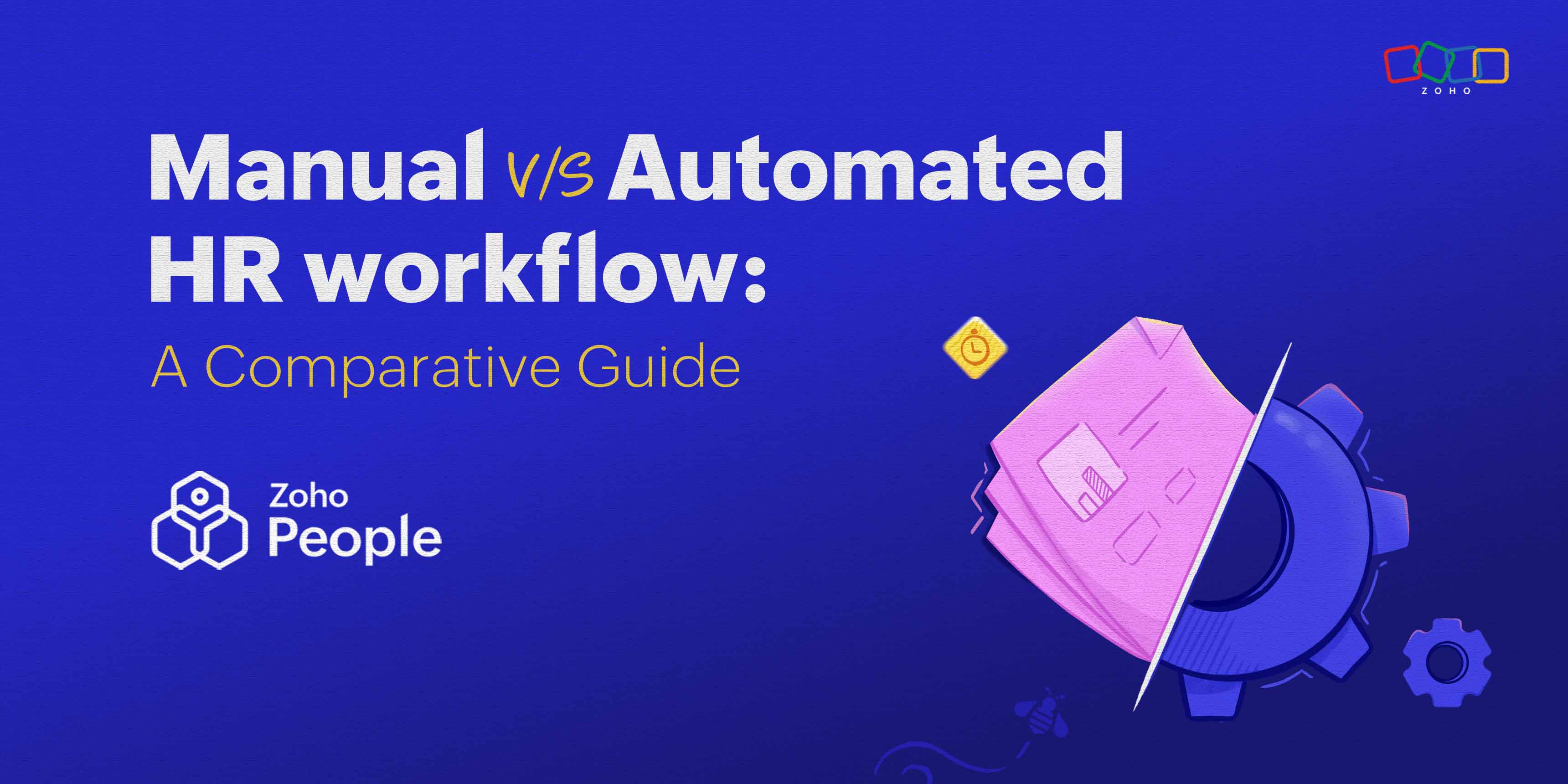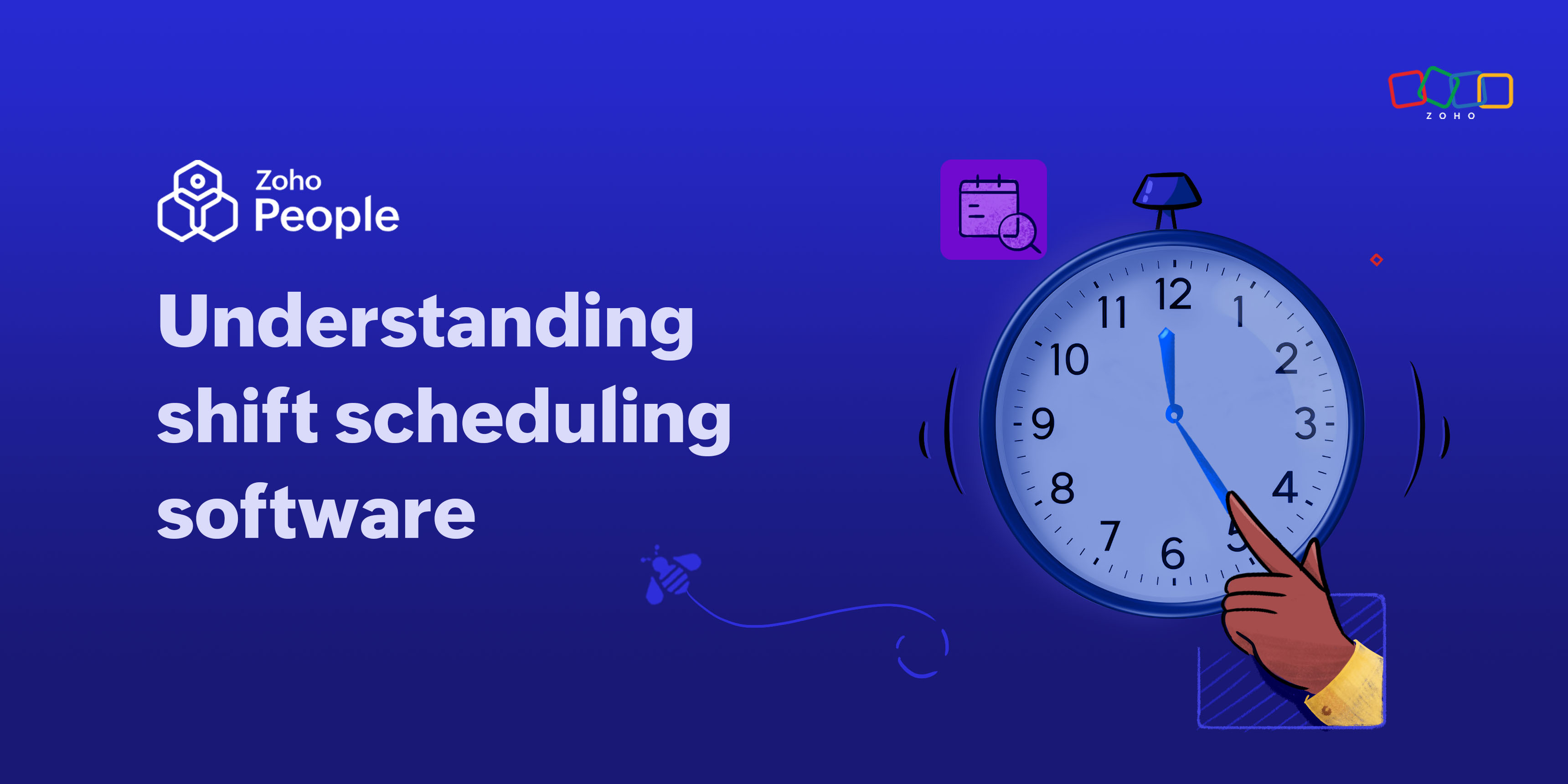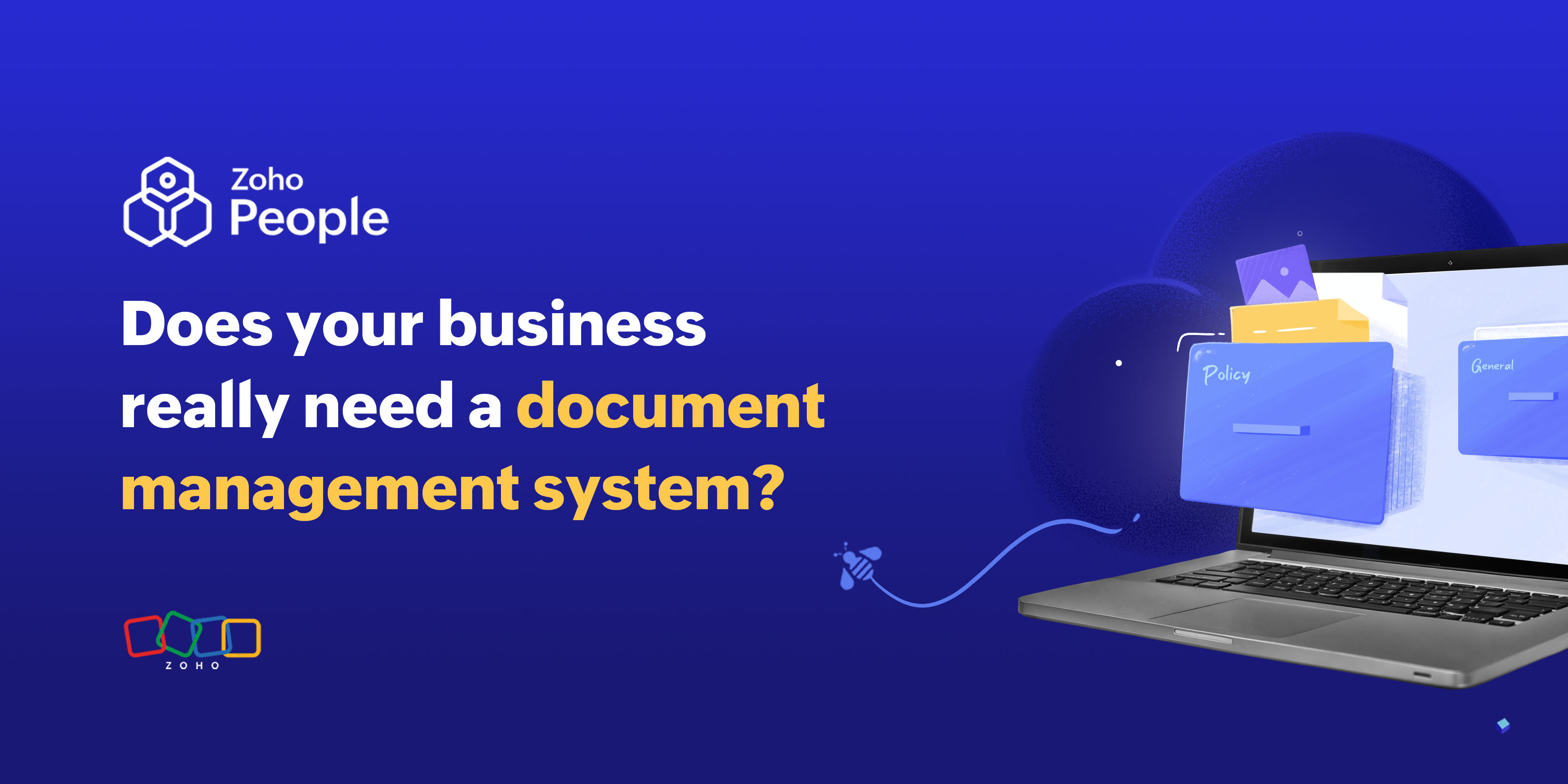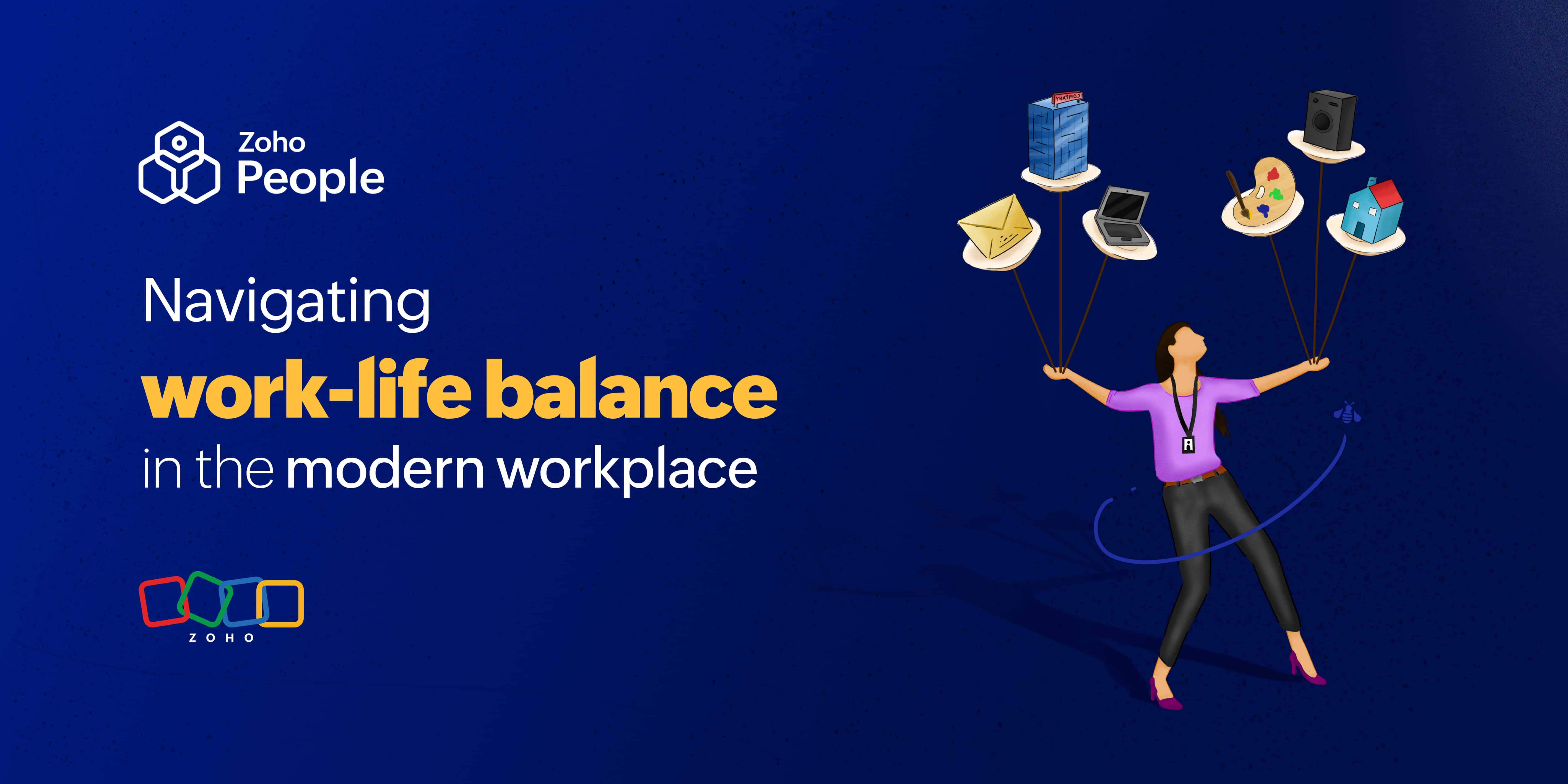- HOME
- HR insights
- Manual vs. automated HR workflows: A comparative guide
Manual vs. automated HR workflows: A comparative guide
- Last Updated : May 23, 2025
- 11 Views
- 3 Min Read

With a never-ending list of responsibilities, HR representatives are not only expected to deal with paperwork but also plan strategic outcomes, enhance employee experience, and ensure regular compliance. As their role continues to evolve, the way they complete their tasks has a direct impact on both the effectiveness of their workflows and the organization's overall efficiency.
What is a manual HR workflow?
A manual HR workflow is a traditional approach to handling HR tasks like onboarding, attendance tracking, leave approvals, payroll, performance management, and more. As the name suggests, manual workflows are done through paperwork, emails, spreadsheets, and in-person meet-ups.
Let's say that an organization hires an employee. When the new hire joins the organization, the HR representative might collect their documents via email or as hard copies. Then, the information is manually updated in spreadsheets, and the documents are handed over to the other departments for signatures. Similarly, when calculating payroll, HR might need to dig through employee attendance records and overtime data—a process that is both time-consuming and prone to errors.
What is an automated HR workflow?
An automated HR workflow software assists HR representatives in carrying out their HR tasks. It enables them to tailor the workflow according to their needs with minimal human intervention. It also allows HR's to perform repetitive tasks, initiate approvals, create reports, and send notifications within a matter of seconds.
For instance, when a new hire joins an organization, HR can use an automated system to initiate onboarding activities, alert respective departments, arrange training resources, and collect e-signatures through a centralized platform.
Why choose automated over manual HR workflows?
Properties | Manual HR workflow | Automated HR workflow |
|---|---|---|
| Efficiency and speed | Delays the process and is time-consuming | Instant execution and real-time updates |
| Accuracy and error reduction. | Prone to error and not always accurate | Reduces errors and ensures accuracy |
| Compliance | Risk of non-compliance due to oversight | Ensures compliance with automatic updates |
Employee experience | Limited self-service options | Enhanced self-service, quicker responses |
Data security | Vulnerable to data breaches | Robust security measures, encrypted data |
Customization | Limited adaptability | Tailored according to business needs |
Scalability | Challenging to scale with growth | Easily scalable to accommodate expansion |
Administrative burden | High workload for HR staff | Frees up HR staff for strategic tasks |
Decision-making | Limited data insights | Data-driven insights for informed decisions |
What are the advantages and disadvantages of manual HR workflows?
Advantages of manual HR workflows
Personalized, human-centric interactions:
The personalized touch can be an advantage when addressing employees in sensitive situations like resolving conflict, termination, and more.
No dependency on technology:
Even when the technology is low, operations can continue without relying on the internet or power.
Greater control over individual tasks:
HR managers can manage and oversee each process.
Disadvantages of manual HR workflows
Time consumption:
Tasks like onboarding, attendance tracking, payroll calculation, and leave approval take longer than necessary.
Prone to mundane errors:
Entering data, calculating payroll, and keeping records are all tasks that are especially prone to errors.
Inefficient to keep records:
Paperwork and spreadsheets are often scattered, making it harder to maintain records.
No scalability:
When organizations start to grow, it can be difficult to keep up with manual paperwork.
What are the advantages and disadvantages of automated HR workflows?
Advantages of automated HR workflows
Improved efficiency:
Repetitive tasks like payroll, leave tracking, and more are completed within a matter of seconds.
Enhanced accuracy:
Reduces human intervention, which means minimal errors.
Real-time data and analytics:
Provides real-time data and reports on workforce trends, performance, and productivity.
Better compliance management:
Ensures adherence to labor laws and regulations through automated checks.
Scalability and flexibility:
Easily handles HR needs for growing business.
Disadvantages of automated HR workflows
Initial setup costs:
Requires spending on initial software setup.
Overreliance:
Too much dependence on software can reduce human oversight, making it easier to miss possible issues.
Wrapping up
As HR responsibilities shift, so do the technologies and methods used to manage HR workflows. While a manual system offers a sense of personal control and a human-centric approach, it often falls short in terms of efficiency, scalability, and error management—especially for growing businesses.
On the other hand, tools with automated HR workflows like Zoho People provide a streamlined, data-driven way to manage day-to-day tasks. From onboarding and attendance tracking to performance and compliance management, automation reduces manual workload and empowers HR managers to focus more on strategic initiatives.


